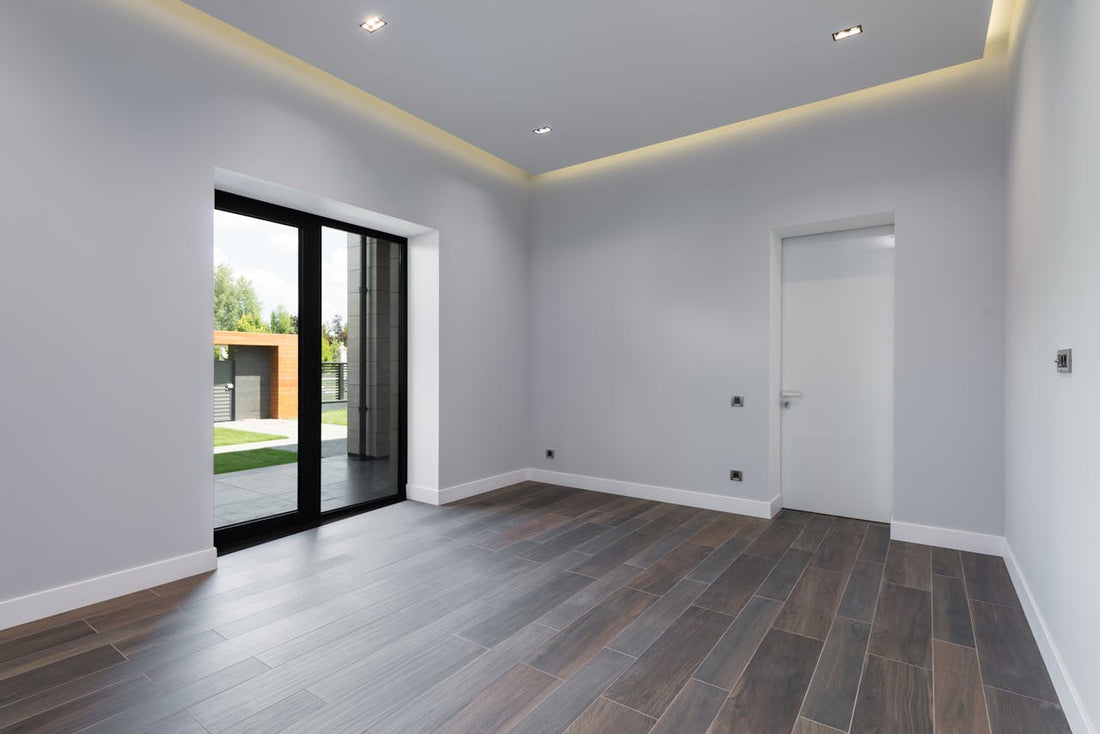Laminate flooring is a popular choice for its affordability and attractive look, but sometimes it can feel spongy or bouncy underfoot. This can be frustrating, especially if the floor is relatively new. Let’s look at why this happens and what you can do to fix it.
Order FREE Laminate Samples
Why Does My Laminate Floor Feel Bouncy?
A bouncy laminate floor usually points to an issue with the subfloor or the installation. Here are some common reasons:
1. Uneven Subfloor
If the subfloor wasn’t properly levelled before installation, gaps can form between the laminate and the subfloor. These gaps make the flooring feel unstable or bouncy.
2. Wrong Type of Underlay
The underlay is a cushion between the laminate and the subfloor. If it’s too thick, too soft, or not suitable for the flooring type, it can lead to an overly springy feel.
3. Moisture Problems
Moisture trapped beneath the laminate can cause the boards to swell or lift, creating a spongy sensation. This is common in areas with high humidity or where there’s been water damage.
4. Improper Installation
If the boards weren’t fitted correctly or the right expansion gaps weren’t left, the floor might not sit evenly, resulting in a bouncy feeling.
Why Does My Floor Feel Spongy When I Walk?
When your floor feels spongy as you walk on it, one or more of these issues might be the cause:
1. Loose Boards
Laminate boards can shift over time if they weren’t clicked together securely during installation. This movement can make the floor feel soft or spongy.
2. Damaged Subfloor
If the subfloor has weakened due to age, rot, or water damage, it can lose its structural integrity, creating a sinking or spongy effect.
3. Insufficient Support
In some cases, the subfloor might not be adequately supported by the joists underneath it, leading to a lack of stability.
How Do You Fix Spongy Laminate Flooring?
The best way to fix spongy laminate flooring depends on the root cause. Here are a few solutions:
1. Level the Subfloor
If the subfloor is uneven, the laminate will need to be removed so the subfloor can be levelled. A levelling compound can help create a smooth base. Once that’s done, the laminate can be reinstalled.
2. Replace the Underlay
If the underlay is too thick or soft, swap it out for a firmer option that’s designed specifically for laminate flooring. This will give the floor better support.
3. Fix Moisture Issues
For moisture-related problems, identify and address the source of the water. Replace any damaged boards and let the subfloor dry completely before reinstalling the laminate.
4. Reinstall Loose Boards
If some boards have come loose, take them up and reinstall them, making sure they’re securely clicked into place.
How Do You Fix Puffed Laminate Flooring?
Puffed or swollen boards are almost always caused by water exposure. Here’s how you can fix the issue:
1. Find the Source of Moisture
Figure out where the moisture is coming from—whether it’s a leak, condensation, or spills—and fix the issue.
2. Replace Damaged Boards
Swollen laminate boards can’t be repaired, so they’ll need to be replaced. Carefully remove the damaged boards and install new ones.
3. Add a Vapour Barrier
When reinstalling, consider adding a vapour barrier beneath the underlay to protect against future moisture problems.
4. Check for Expansion Gaps
Make sure there’s enough space around the edges of the room for the flooring to expand and contract naturally. Without these gaps, the boards can press against each other and puff up.
Order FREE Laminate Samples
How to Prevent Spongy Laminate Flooring
To avoid these issues, it’s best to focus on proper preparation and care:
-
Get the Installation Right: Make sure the subfloor is level and in good condition before the laminate is installed. Use the correct underlay and leave expansion gaps.
-
Keep Moisture in Check: Use a dehumidifier in humid areas and clean up spills quickly to reduce the risk of water damage.
-
Inspect the Subfloor: Before installation, check that the subfloor is solid and free from damage or rot.
Laminate flooring can be a great addition to your home, but it needs the right setup to perform well. If your floor feels spongy, addressing the problem quickly can save you time and money while keeping your space comfortable and stylish.





